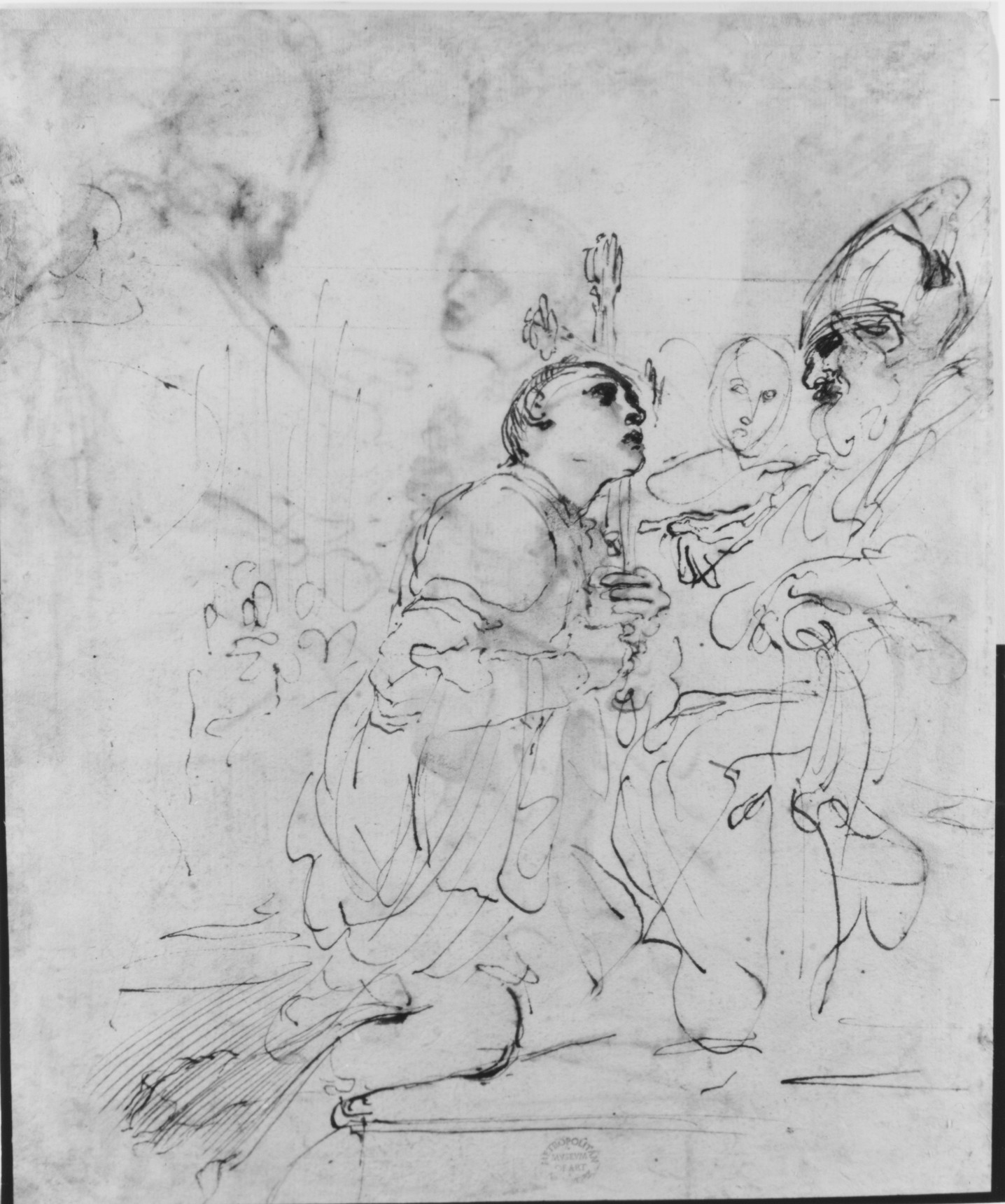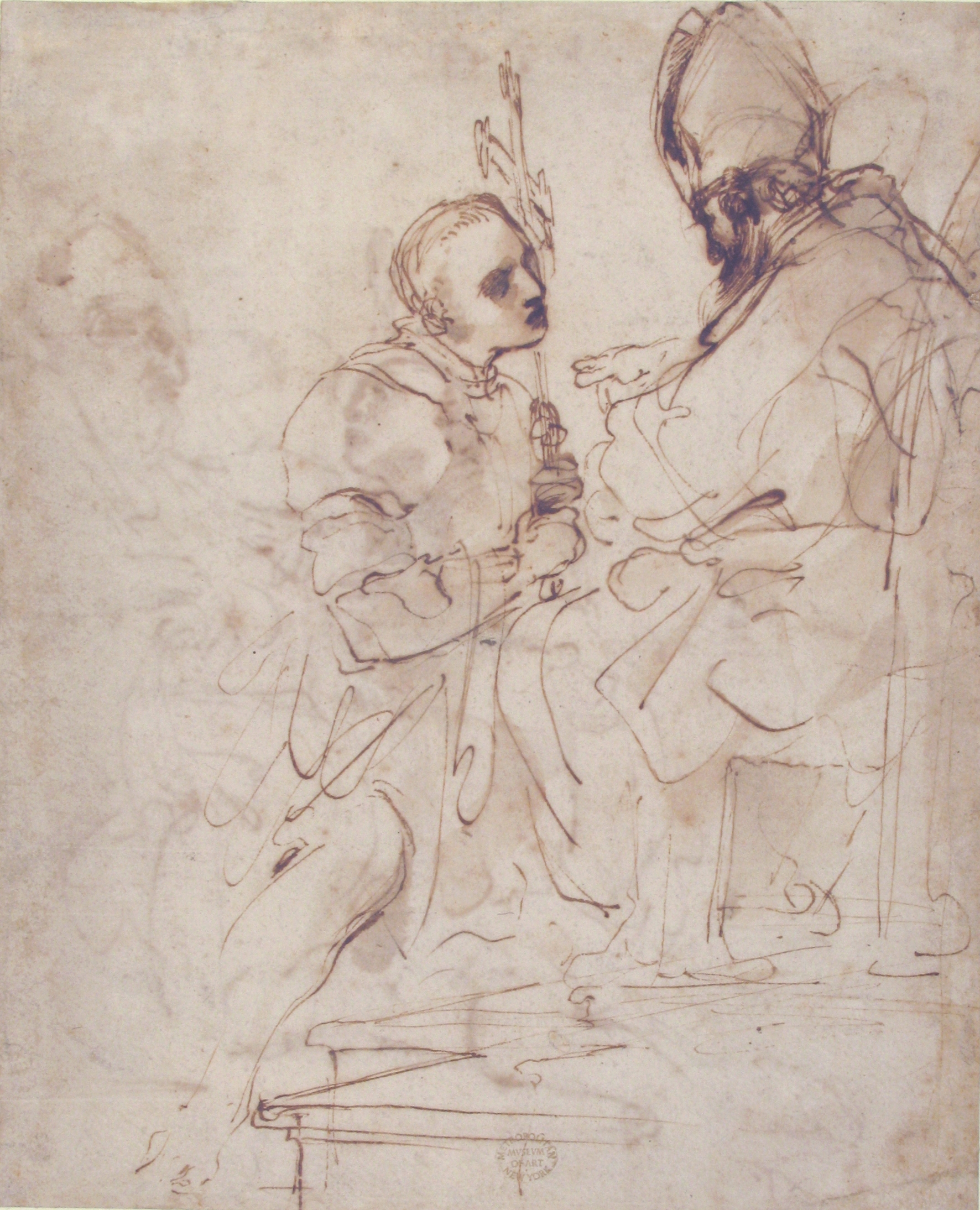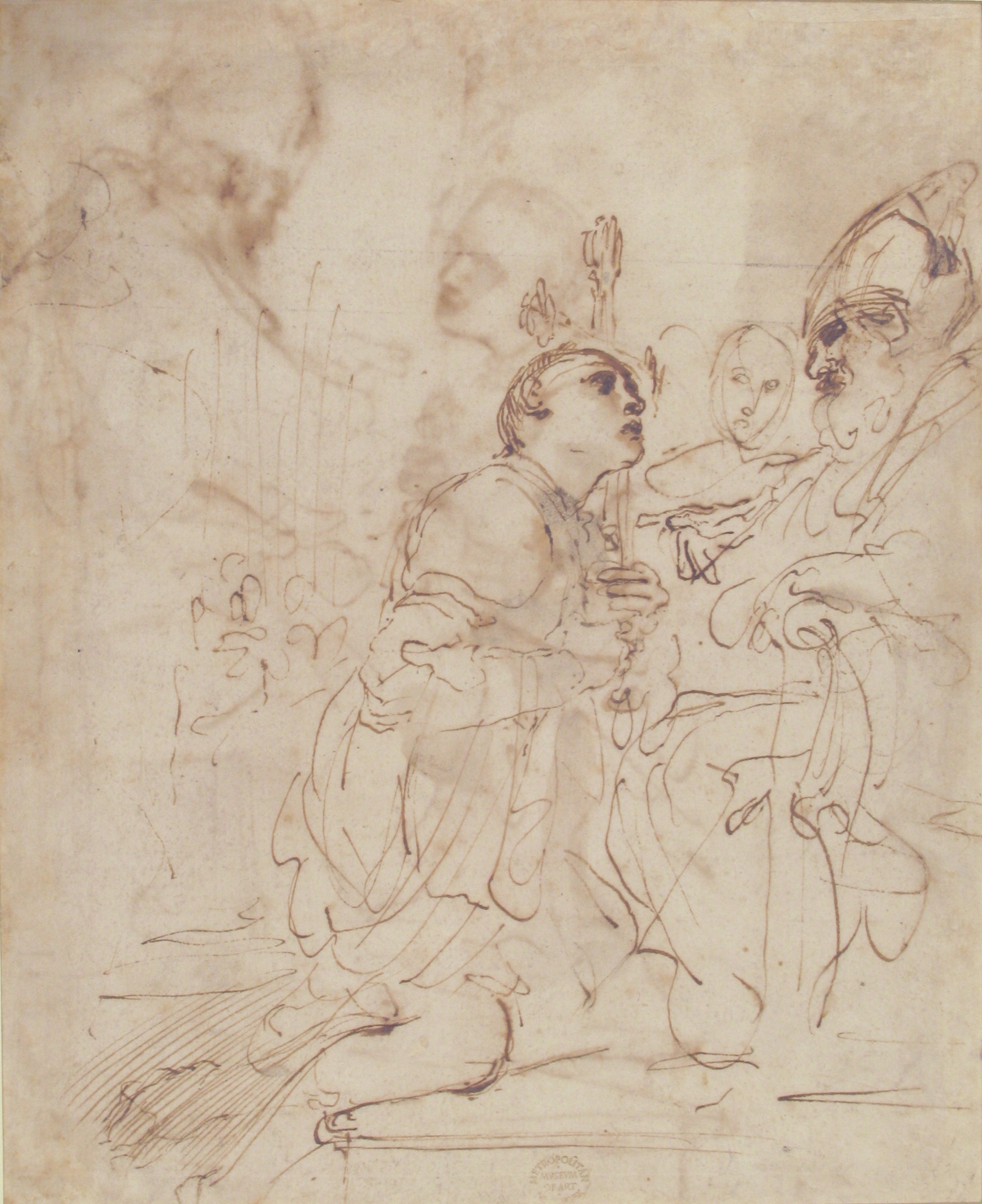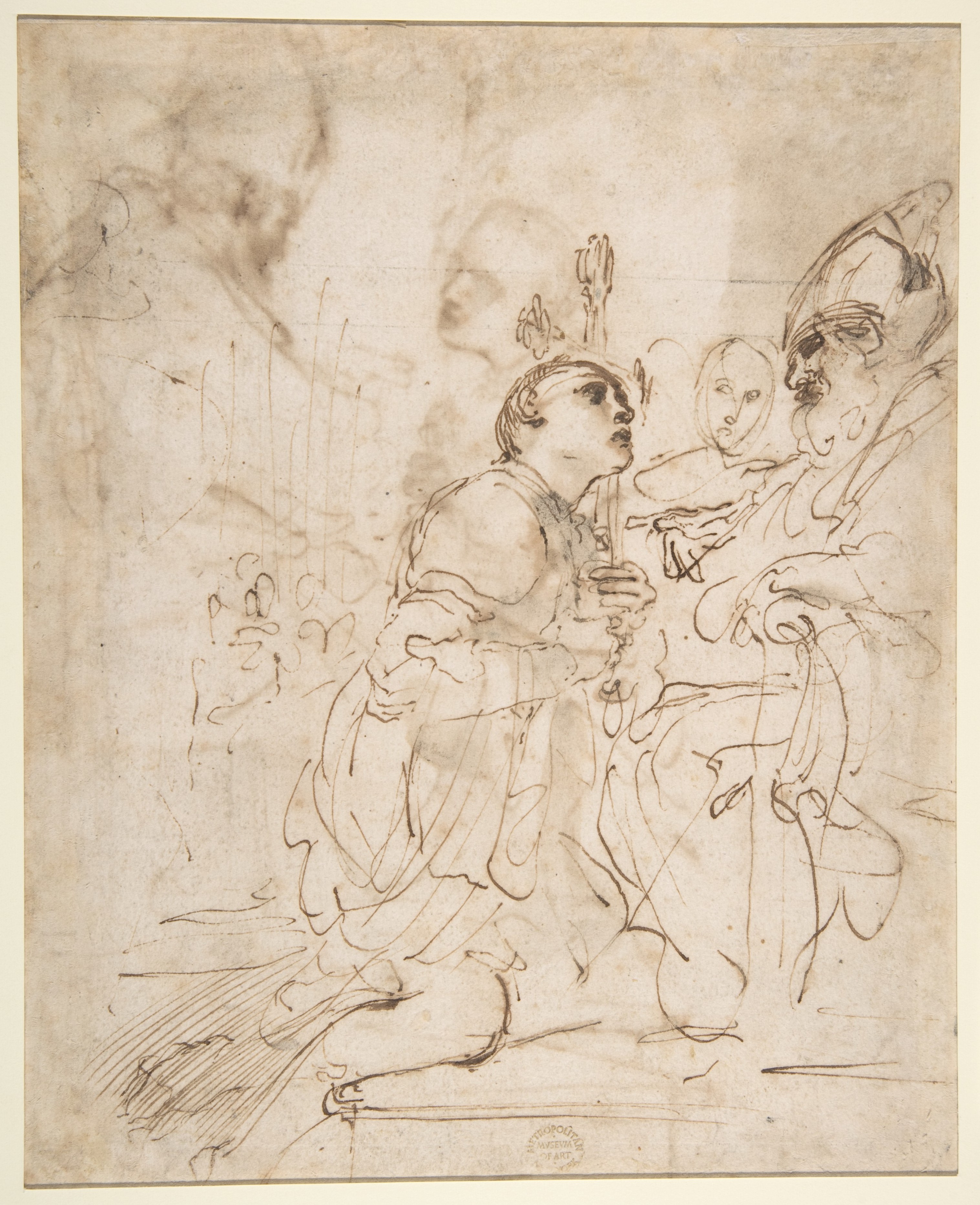Youth Kneeling before a Prelate (recto); Another Study of a Youth Kneeling before a Prelate (verso)
Guercino (Giovanni Francesco Barbieri) Italian
Not on view
This double-sided sheet features two closely similar sketches for the principal figures in Guercino's altarpiece representing Saint William, Duke of Aquitaine, receiving the monastic habit, painted in 1620 for the Church of San Gregorio in Bologna (now Pinacoteca Nazionale, Bologna). Both studies show one composition but reversed in design orientation with respect to the final altarpiece.
Guercino's preparation for this celebrated early work is recorded in a number of composition sketches. In the painting, Saint William, kneeling before Saint Benedict of Ariane who is seated at the left, pulls a monastic cowl over his head; a drawing at Windsor (RL 12474) gives this solution. In the three drawings at the Louvre (inv. nos. 6884, 6885, 6886) and one at Frankfurt (Städel Museum inv.3922) Saint William, kneeling or standing before the prelate, already wears the habit. On both the recto and verso of the MMA sheet the kneeling saint, still clad in armor, holds a cross in hand, and this theme is elaborated in reverse with the addition of the other figures in a further Louvre drawing (inv. 6883).
Drawings in the Kupferstichkabinett in Berlin (K.d.Z. 16362) and Kupferstichkabinett Dresden (inv. C 1913-7) show Saint William clad in armor, standing before the bishop. A complete compositional study with notable variations, that once belonged to Baron Dominique Vivant-Denon (1747-1825), is now in the collection of Pierre Rosenberg, Paris. Denis Mahon has identified a number of studies for other figures and groups in this composition, including a beautiful black chalk study for the drapery of the Virgin in the Koenig Fachsenfeld collection. While the Metropolitan Museum’s studies do not correspond exactly to the configuration of the same figures in the executed Bologna altarpiece, they are considered alternate ideas for the Saint William figure done during the preparatory stage and are dated universally to 1620, the year of the altarpiece commission.
A date of ca. 1620 may be determined independently of the documented commission through comparison with other drawings from the artist's early Roman period. Other pen and ink studies, likewise in preparation for an altarpieces, are other drawings for St. William Receiving the Monastic Habit, a painting dated to 1620. The pen style in drawings for these projects, in particular, St William Receiving the Monastic Habit (Royal Library, Windsor, inv. no. 2475), features a rather rapid and loose, modulating line with close parallel hatching, rather than wash, for shading [Turner and Plazzotta, 1991, cat. nos. 26-28].
Due to rights restrictions, this image cannot be enlarged, viewed at full screen, or downloaded.
This artwork is meant to be viewed from right to left. Scroll left to view more.







